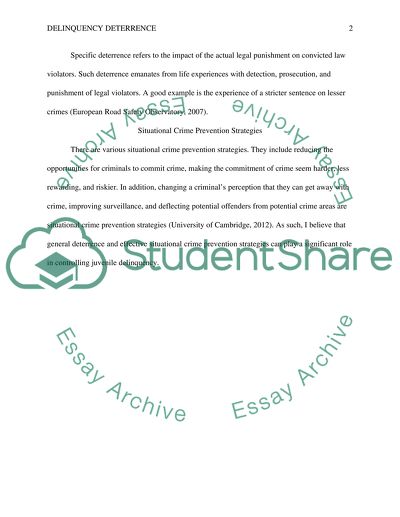Situational Crime Prevention Case Study Example | Topics and Well Written Essays - 432 words. Retrieved from https://studentshare.org/law/1603155-delinquency-deterrence
Situational Crime Prevention Case Study Example | Topics and Well Written Essays - 432 Words. https://studentshare.org/law/1603155-delinquency-deterrence.


